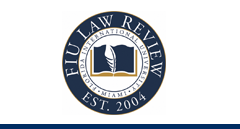Alternate Title
Policy and Poppycock in Proximate Cause Cases A/K/A Scope of Liability and Starting to Make Sense
Keywords
Torts, Proximate Cause, Scope of Liabilty
Abstract
Studying proximate cause is like trying to decode mumbo jumbo. Courts continue to use words like direct, remote, natural and probable, foreseeable, hindsight, and intervening and superseding causes, and they make them sound like tests. They make them sound like law. Furthermore, as one test is debunked and another appears, courts continue to apply the debunked tests. They just pile on a new one as well. Then, they calm themselves and say that proximate cause is all a matter of policy. After all, Leon Green said that; William Prosser said that. It must be true. But courts fail to ever articulate any policy other than that liability cannot be unlimited. That statement is a mere truism not a guiding light for decision in particular cases. There are broad policies of tort law: deterrence, compensation of victims, proper allocation of resources, predictability, and legislative will. They are meaningful in determining whether a court should hold that a defendant does not owe a duty to a class of plaintiffs or to protect against a broad category of injury. That is, those grand policies are triggered and called into action when the court is articulating a rule applicable to future cases. The Third Restatement of Torts: Liability for Physical and Emotional Harm contemplates the possibility of broad policy-based exceptions to the general duty to exercise reasonable care based on policy or principle. But those tort law policies are meaningless in particular discrete cases. Deciding whether someone should or should not be liable on the specific facts of a case does not involve grand concepts; it involves applying common sense and fairness. A scope of liability decision, or what the courts still too often call proximate or legal cause, is not law. It is a nuanced decision limited to the facts before the court. And making that common-sense fairness decision does not involve policy and it does not require the expertise of a judge. It is an issue for the factfinder, often a jury of reasonable people. The Third Restatement of Torts: Liability for Physical and Emotional Harm employs a risk standard to determine scope of liability. It gives that decision to the factfinder and asks them to consider whether the risk which actually arose was within the risk or group of risks which made the defendant negligent in the first place. i.e., was the risk which arose of the same character as the risks you considered when you decided breach. That makes sense. We have known there was a problem with proximate cause for a long time—about 100 years. But we just keep going on. Herein, I argue that courts should: (1) start calling proximate cause scope of liability and stop saying proximate or legal cause; (2) stop saying scope of liability is a matter of policy; that is poppycock; (3) stop applying the mumbo jumbo, unhelpful, confusing, malleable proximate cause tests/words/jingles; (4) adopt the risk standard; (5) clearly provide that the determination of scope of liability is a question for the factfinder—it is not law; (6) recognize that the factfinder’s scope of liability decision is based on common sense and fairness; and (7) review jury decisions on scope of liability with the same deference provided to other factfinder decisions—affirm them unless they are manifestly wrong. Then, we will be in a legally better place.
Recommended Citation
Thomas Galligan, Policy and Poppycock in Proximate Cause Cases A/K/A Scope of Liability and Starting to Make Sense, 19 FIU L. Rev. 127 (2025), https://doi.org/10.25148/lawrev.19.1.6.





